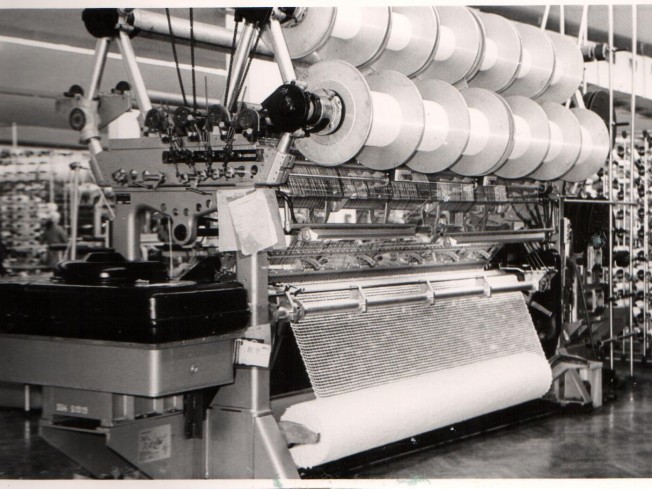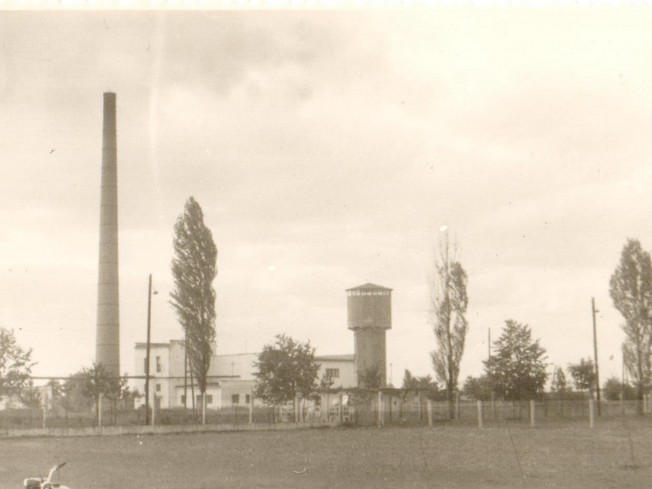The residential buildings were built to the north of the plant. There, we can see those built during the implementation of the Central Industrial Region project, and those added after World War II. The latter ones include the house for the directors, one for the foremen and one for the mechanics. The designs were probably supervised by Józef Szwarek, an engineer in Warsaw.
The most luxurious house was inhabited by the directors of the Administration and Finance Department and the Technical Department. The semi-detached house at 1 Sikorskiego street was 20 m long, 11.5m wide and 9.2m high. Each of the two split-level flats were given internal stairwells offering access to six rooms, a kitchen, a dining room, a bathroom and a servant flat.
The foreman house (currently at 5 Sikorskiego street), based on a 23m x 10.71m floor plan, offered flats for four families. The stairwell, located in the central part of the building, led to the flats that had been given the same number of rooms: three rooms, a kitchen and a bathroom. The last of the houses actually built at the time of the CIR project (today: 7 Sikorskiego street) was intended for mechanics. Based on a 11.5m x 9m floor plan, it accommodated two families: one on each floor. The flats had a dining room, a bedroom, a kitchen with a pantry, a bathroom and a servant room.
All these brick houses were based on reinforced concrete foundations, with basements. The house for the foremen was given sound insulation. The interiors were unassuming, fitted with the stairs made of oak wood, whereas external stairs were given terrazzo flooring. The houses were connected to the hot water supply and the power grid. They were heated with tiled stoves.
Compared to the simplified forms typical of the CIR architecture, the residential buildings in Skopanie were distinct due to the intense sculptural feel of the subdivisions in their silhouettes, numerous avant-corpses, right proportions and the professionally created compositional tension of the elevations, which has been achieved through the varied sizes and arrangement of window openings. Another worthwhile element is the large, very tall and narrow stairwell windows – of a different size for each house. Having survived in a practically unchanged form, they should be listed as an architectural heritage site due to their unique qualities.
Another site on the Route is the Wisan S.A. Curtain Manufacturer – the former Krusche & Ender Cotton Plant in Pabianice Joint Stock Company. We leave Sikorskiego street, get back to Jana Pawła II street, and head for the intersection with Świętej Królowej Jadwigi street. We will reach the plant at 7 Włókniarzy street.
The plant in Skopanie was built 1.5 km away from the border of the town of Baranów Sandomierski. At the construction stage, the plant was intended for a 350-strong workforce. Thanks to the plant, the population of the neighbouring Baranów Sandomierski was to increase up to 1,000 people. The plant was to produce yarn, cotton fabrics, as well as such items important for national defence as tyre cords for cars, motorcycles, bicycles, cloths for transmission belts, breaks, tents, backpacks, balloons, etc., which had previously had to be delivered from abroad.
The work on the plant began in spring 1939. Before World War II broke out in September, the production hall, raw material warehouse, gatekeeper’s building, three residential buildings and the boiler house foundations had been completed. The work on the construction of the workers’ hostel had just begun. English-made machines were mounted in the production hall, while Egyptian cotton waited in the warehouse.
The outbreak of World War II stopped the growth of the company. Having bombed the area, the Nazi Germans seized the plant and transferred all the equipment and the raw material to Pabianice. The plant building was used as a grain warehouse until 1943, when military aircraft repair workshops were established on its premises. A railway siding was built at that time, which facilitated transport of the damaged planes. Shortly before the entry of the Soviet army in 1944, the Nazi German occupiers evacuated the workshop equipment and machines, and mined the premises. Luckily, the plant was not blown up.
An insight into the post-war years is offered by one of the very first employees of the plant, Stanisław Widuch: “In the late 1948, the plant in Skopanie caught the eye of the United Curtain and Lace Plant in Łódź. At first, two porters were taken on, just to save what was left of it after the war. In July, the State Management of the Curtain and Lace Plant Construction was appointed, and in May of 1949 we, a team of 10, went to Łódź to take part in a spinning machine assembly course. When we returned, our job was to bring the dilapidated production halls back to life. In the spring of 1950, spinning machines began arriving.” [Bogumiła Trzaska, 50 lat Fabryki Firanek w Skopaniu (1951–2001), Rzeszowskie Zakłady Graficzne S.A., Czerwiec 2001].
Another description of the work done at that time is offered by Tadeusz Sadryna, who worked there for 40 years and 7 months: “We were working 12 hours a day for more than 2.5 months. English spinning machines were brought by rail from the port in Gdynia. As the work on the preparation of the halls progressed, the assembly work began, conducted by 3 English assemblers and 10 Polish ones, who had just completed a six-month course in Łódź. We lacked basic tools – I brought some of them from home, because my father had a mechanical workshop in Baranów.”
Stanisław Widuch recalls the Spring of 1951 as follows: “We began to turn the machines on and launch the production. The hardest thing was that we were learning ourselves, but we had to teach others. Sometimes, a technologist came from Łódź, for 2 or 3 days, but only to direct the start-up work. We often worked day and night without any extra pay.”
In the 1950s, the plant reached its full production capacity and, gradually, became one of the major curtain manufacturers in Europe. The main production hall, in the centre of the premises, was 232m long, 36-4m wide and 7.8m high. Besides the production area, it comprised a metal workshop, welding stations for installation electricians, a production maintenance warehouse, transformer stations, toilets and cloakrooms. An important element was the air conditioners, placed in a special room, which ensured continuous influx of fresh air of pre-defined temperature and humidity, and disposed of the used-up air. Cotton dust, which was a waste product, was removed by sucking facilities. West to the hall, a 13-metre-high dust-extraction tower was built. The management were sensitive to the fire safety regulations, so the warehouse was constantly equipped with fire hydrants and fire extinguishers.
The buildings in the plant complex were designed according to the usual stylistic standard of the time. The plant elevation was given large windows, subdivided into nine rectangular modules, whereas the roofs of the auxiliary buildings were fitted with oblong glazed extensions on top.
The main production hall is still being used. At present, the Wisan S.A. Curtain Manufacturer is the most important plant in Skopanie, which employs about 200 people. One of Poland’s five major curtain manufacturers, the company is recognized in many parts of the world as one of the largest such plants in Europe. A great variety of the designs offered and the production techniques attract buyers from abroad. Wisan-made curtains are available, for example, in South Africa, Chile, New Zealand, Canada and the United States.
Guided tours of the plant are available, subject to advance arrangement. In the production halls, we will learn about the consecutive stages of curtain production. We will see both weaving and knitting machines, as well as jacquard looms, both mechanical and computer-controlled. A great majority of them are very modern, but some machines still operating in the plant date from the 1950s. An employee of the plant will take us on a tour of the premises, explaining how selected equipment works, and describing how curtains are manufactured, step by step. After the tour, a good idea would be to visit the shop near the production hall, where we will find a wide array of both white and colourful curtains made by Wisan S.A.
Now, to get to a bus stop, we return to Królowej Jadwigi street and head for the intersection with Jana Pawła II street. Then, we walk northwards, and reach the bus stop in about 500 metres.







